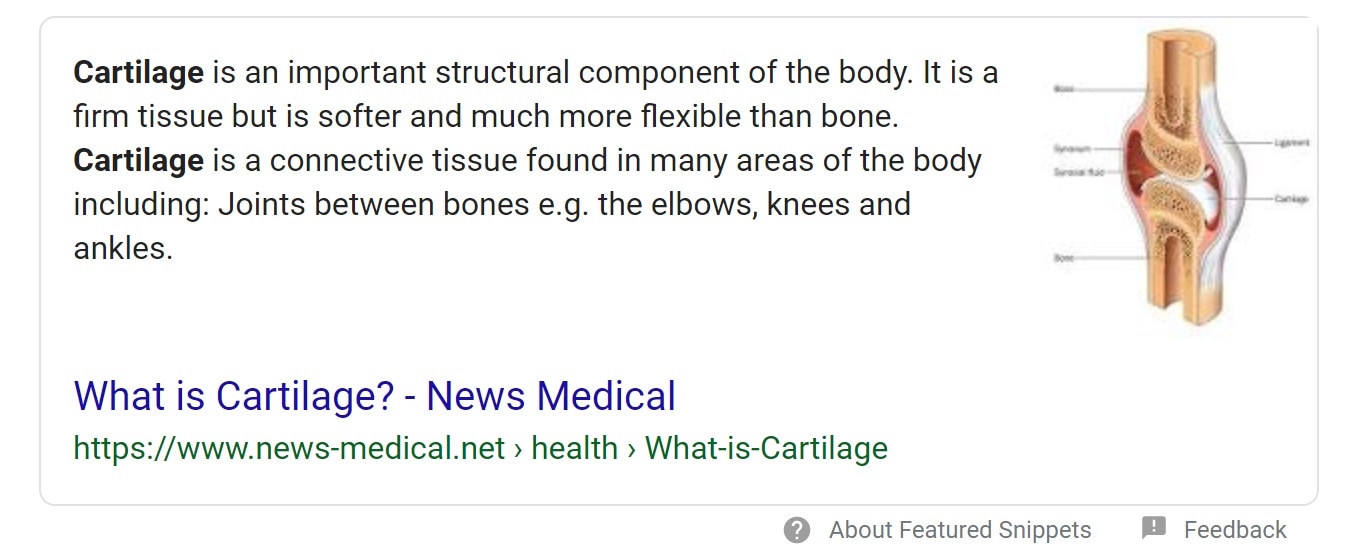 If you want to build an online audience, ranking well on Google must be a priority. Typically, 26% of all clicks go to the 1st position on the SERPs (Search Engine Results Page), with this percentage decreasing significantly as you go further down the page. This reinforces the importance of ensuring your site is optimised well enough to get these top positions.
If you want to build an online audience, ranking well on Google must be a priority. Typically, 26% of all clicks go to the 1st position on the SERPs (Search Engine Results Page), with this percentage decreasing significantly as you go further down the page. This reinforces the importance of ensuring your site is optimised well enough to get these top positions.
Additionally, on some SERPs, Google also displays a ‘featured snippet,’ often called ‘Position 0’, which presents the user with a quick snapshot of information that Google feels is relevant to the query. Where this feature is shown, it takes 8.9% of all clicks to the page, and reduces the CTR of position one to 19.6%, so it is not insignificant. In this blog post we’re going to discuss Google’s featured snippets in more detail.
What is a Featured Snippet?
As we’ve mentioned above, a featured snippet is a Google SERP feature, which provides the user with an answer to their query.

Not to be confused with Rich Answers, which don’t provide a link through to a website, featured snippets present a quick a direct answer to a query, and allow a user to click through to find out more information.
You’ll find these featured snippets on 12.29% of all search queries, which is quite a significant number. So, creating content to win the featured snippet is a great strategy to improve your organic traffic and, ultimately, sales.
Types of Featured Snippets
Now we understand what a featured snippet is, it’s important to understand there are many different types. You should consider which snippet is best suited for the intent of your target audience and create your content accordingly.
Paragraph Featured Snippet
The paragraph featured snippet is undoubtedly the most common. They will generally show a short paragraph answering a question, and this content is taken verbatim from the page it’s linking too. Top of the funnel pieces of content work exceptionally well when trying to win featured snippet;
What is Cartilage?

One downside to these featured snippets is that they can answer the user's question without them having to click through on your site to read more. To try and avoid this, you want to provide a short, concise answer to the question as close to the top of your content as possible, then provide additional information that encourages the user to click.
List Featured Snippets
There are two different types of list featured snippets available, bullet points and numbered lists.
Bullet point featured snippets are used for general lists, such as a list of particular products in one range, or ranking lists, for example, ‘Top 10 Types of X’.
It’s also important to note here, these lists are not always taken verbatim from the page, they are often pulled from the headings on the page, so it is vital to ensure you use consistent headings on the page to ensure the correct information is considered for the featured snippet.
This type of featured snippet is very powerful, as it doesn’t give too much information away and encourages the user to click through to find out more about the one point on the list that interests them.

Numbered lists are more common in ‘how to’ type searches, where you have specific instructions in a set order to complete a particular task. With these types of lists, good practice is to have a short first sentence or heading that outlines the point, and then go into further detail. Again, this encourages the user to click through.
It’s also worthwhile looking at how many points Google is currently displaying for the featured snippet you are targeting and to make your list a few points longer. By doing this, you’re leaving the user without the final points and encouraging a click through to finish the list.
Table Featured Snippets
Table featured snippets are used to pull information that is displayed in tables on the webpage. They are quite sophisticated, as they are not necessarily pulled in the same format as they are on the page. Google can pull these featured snippets to feature only the information the user is looking for.

Table featured snippets are often used to display data, such as chemical composition, instrument specifications, etc.
When you’re using a table in your piece of content, ensure it has clear headings, so the user (and Google) understands it completely.
Google will only display four rows of content, so ensure your tables are bigger than this to encourage the user to click through and see the full table.
What Makes a Good Featured Snippet?
We’ve covered the different types of featured snippets and touched briefly on the content that works best for each one; however, there are common features of content that work well across the board.
Typically, featured snippets only display top of the funnel content. If your reader is looking for something a bit more technical and in-depth, a featured snippet won’t be shown. If you’re creating top of the funnel content as part of a content marketing campaign, it’s always worth considering featured snippets, as winning one can provide a large amount of traffic.

Another crucial aspect for featured snippets is clearly defined headings. You need to ensure that Google can understand exactly what each section is about so it can successfully display the information. You also need to make sure you use the correct heading structure within your content, so it is clearly defined.
When writing content specifically to target a featured snippet, it’s important to avoid any jargon. Users who are searching for these types of topics are generally completely new to the topic, so you need to avoid any language that won’t be universally understood.
Find Featured Snippet Opportunities
Knowing how to write content to target featured snippet positions is only half of the battle. We also need to determine where the opportunities for featured snippet placements are.
The easiest way to do this is to go to Google directly. If you do a few simple searches for keywords relating to your product or service, you’ll be able to determine which SERP results actually show a featured snippet box.
You can also use a third-party tool, such as SEMRush, to help you do this, as they can show you which SERP features are available for specific terms.
When deciding what type of content to write to try and win this featured snippet, you should consider the ‘search intent’ of the user. We covered search intent in more detail in a previous blog post.
Once you’ve determined which keyword term you want to target, you should then start to look at who is already ranking in this position. Google already considers this website the ‘expert’ in this particular area, so you want to make sure you can add more value than what they are already giving.
Schedule an SEO Demo
While you shouldn’t copy the existing content, it’s a good idea to take some inspiration from what’s already ranking well, put your unique spin on it, and add even more information to try and knock them off the top spot.
When creating new content as part of a content marketing strategy, targeting the featured snippet positions can be a ‘quick-win’ opportunity. While these pieces of content are not necessarily aimed towards people who are at the buying stage of the buying cycle, they can provide brand awareness and more traffic to your site relatively easily.
Related Testimonials
-

We would absolutely recommend AZoNetwork’s SEO services as they have experts who know what they’re doing, and they won’t charge or recommend something that isn’t needed
Nancy Wright-Ross Bruker Optics
-

Since working with AZoNetwork’s Web Services and SEO team, Thermcraft are now page 1 for a huge amount of our chosen keywords and we have seen a 72.46% increase in organic traffic.
Derrick Wilson Thermcraft
-

AZoNetwork focus on optimizing their clients’ content, which has helped tremendously with SEO and referral traffic which leads to an increase in sales inquiries as well.
Sandy Schiller Spectro Scientific